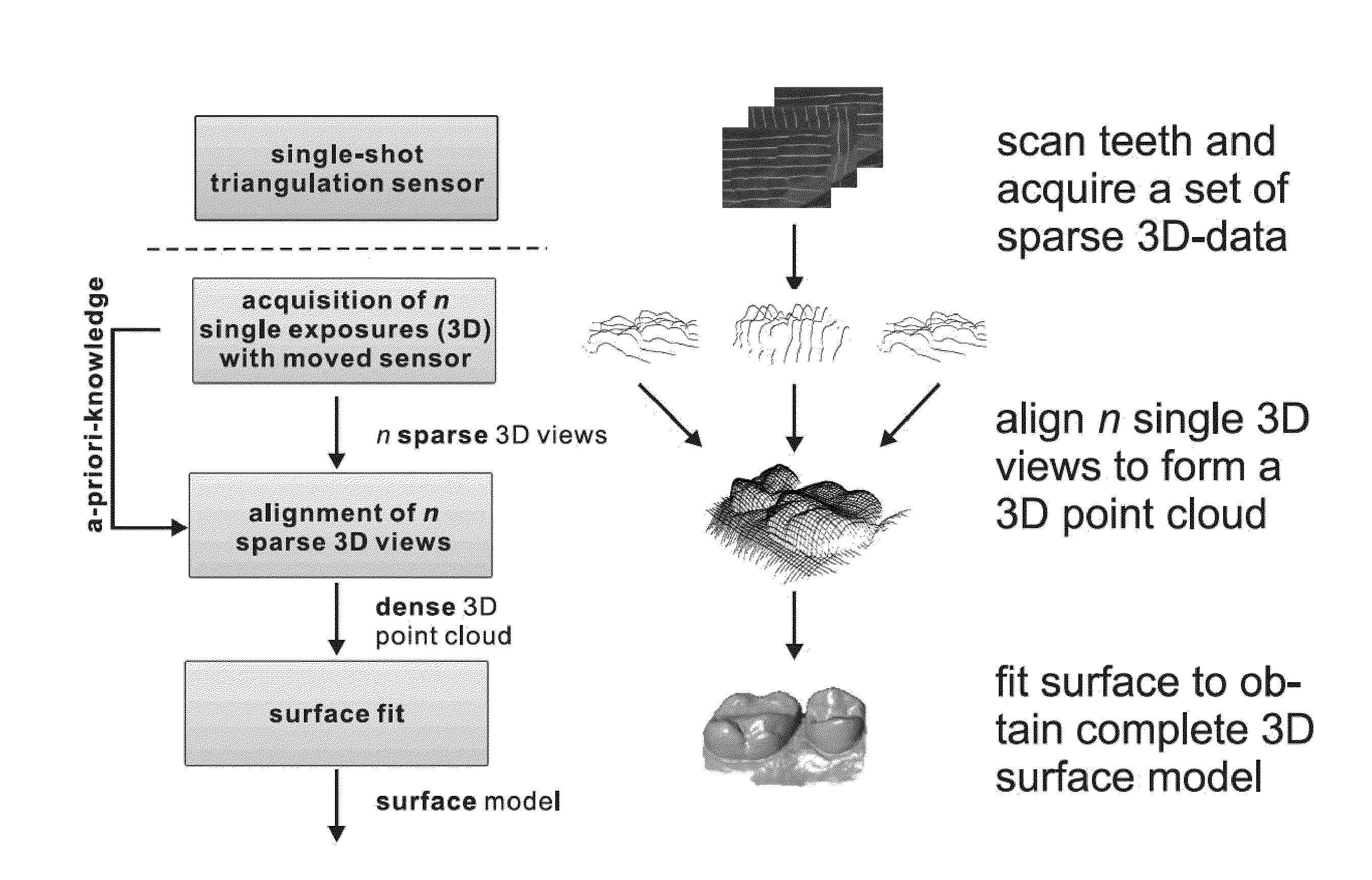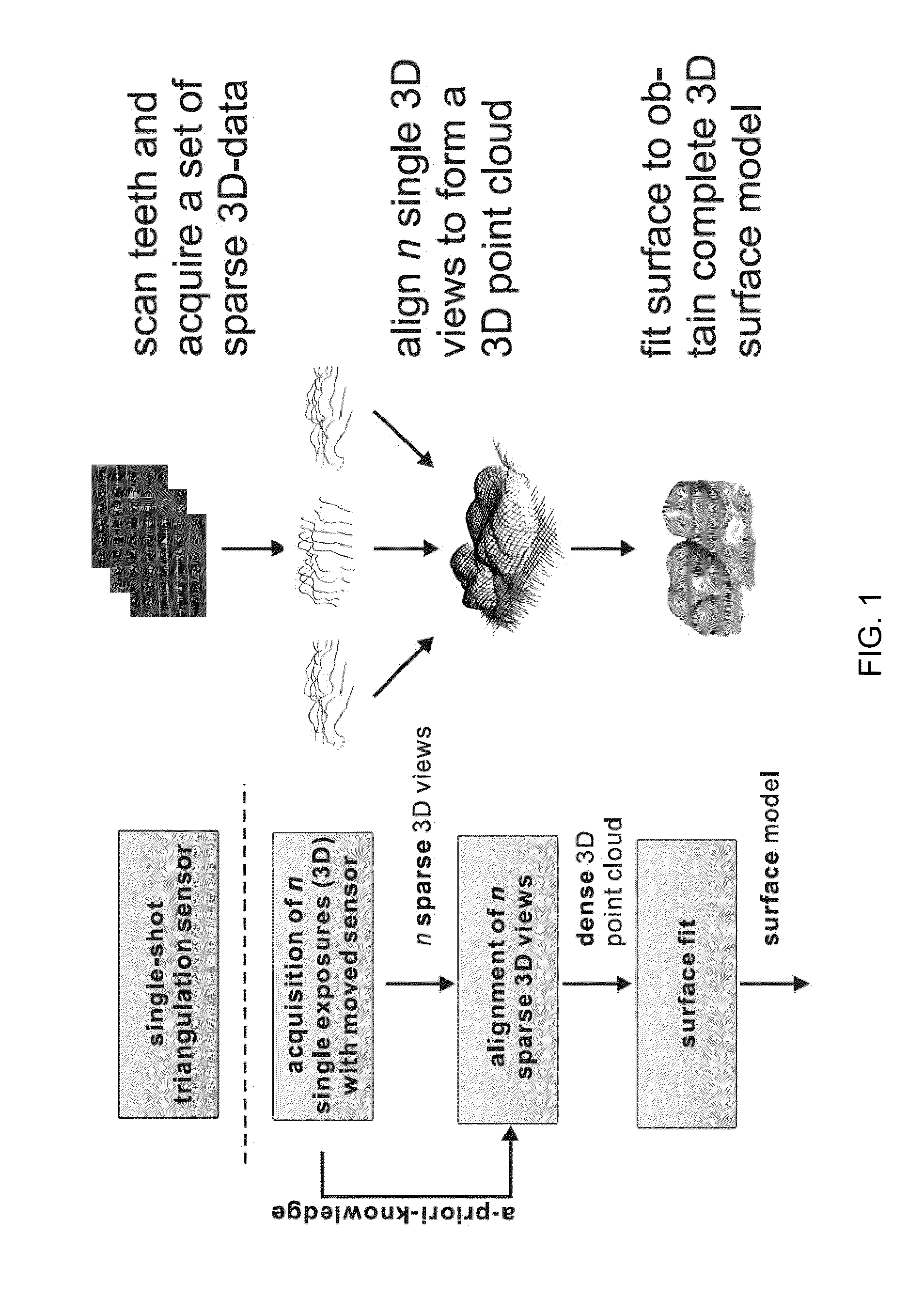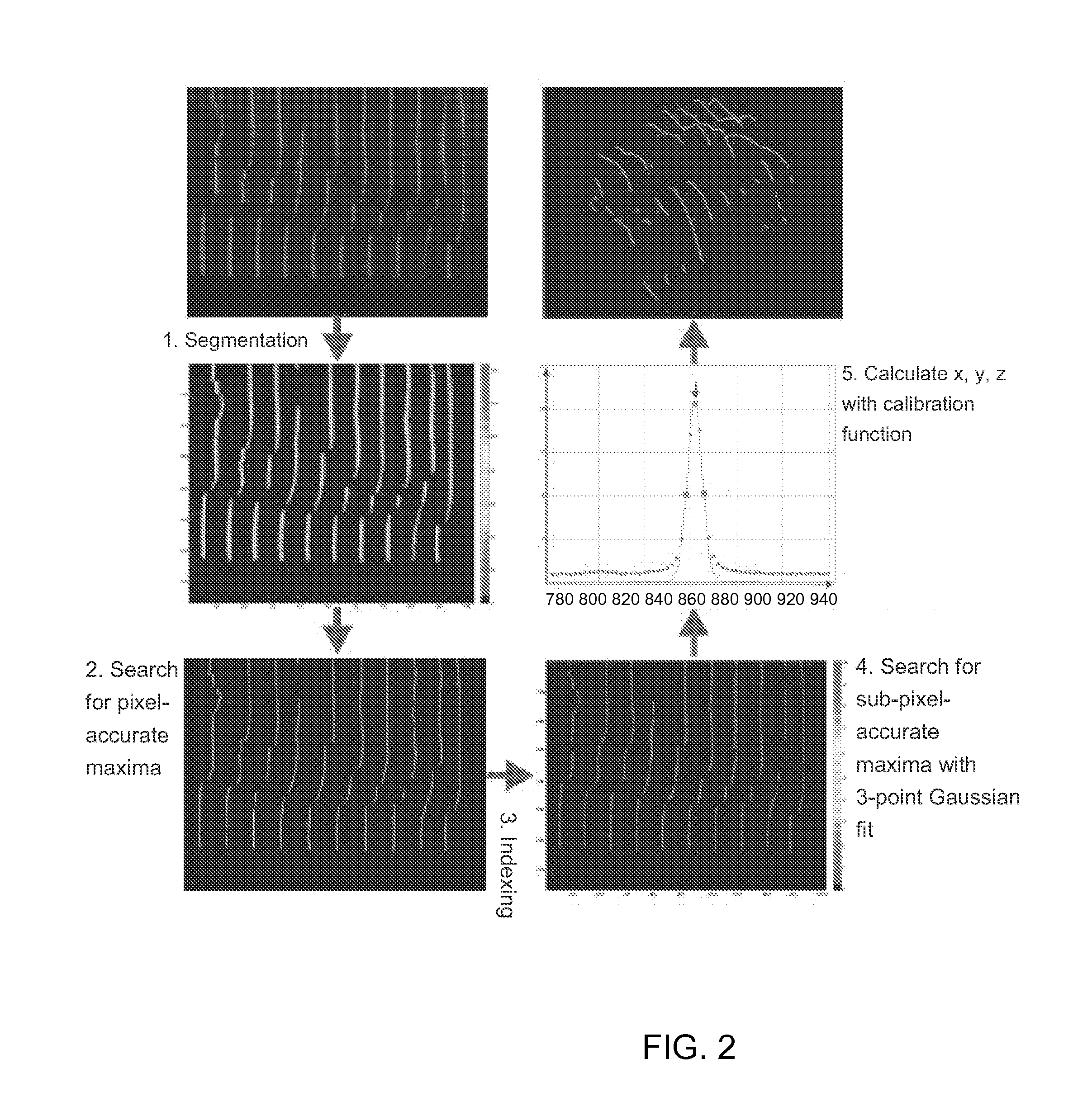Method and device for three-dimensional surface detection with a dynamic reference frame
hree-dimensional surface technology, applied in the field of three-dimensional surface detection with a dynamic reference frame, can solve the problems of inconvenient measurement, inability to achieve the acquisition of 3d topography from a single observation direction, and the sensor is not well-adapted, so as to achieve simple and robust acquisition of object surfaces.
- Summary
- Abstract
- Description
- Claims
- Application Information
AI Technical Summary
Benefits of technology
Problems solved by technology
Method used
Image
Examples
Embodiment Construction
[0074]Referring now to the figures of the drawing in detail and first, particularly, to FIG. 1 thereof, there is seen a flow chart with a workflow sequence of the flying triangulation principle with reference to the acquisition of dental information. In a first step, a geometrical calibration of the sensor is performed and the parameters are determined that are necessary to obtain 3D data from the camera images. Beginning with the first acquired camera image, an algorithm calculates a 3D view from each 2D camera image. That result is displayed in FIG. 2.
[0075]Initially, a preview of the unregistered (i.e., non-aligned) 3D data is displayed live to the user (e.g., two to four 3D data sets, not the camera images), in order to allow the proper positioning of the sensor. In the alternative, it is also possible to display a camera image (or video) in order for the user to immediately see the proper positioning of the sensor. After initiating the measuring sequence, an indexing module det...
PUM
 Login to View More
Login to View More Abstract
Description
Claims
Application Information
 Login to View More
Login to View More - R&D
- Intellectual Property
- Life Sciences
- Materials
- Tech Scout
- Unparalleled Data Quality
- Higher Quality Content
- 60% Fewer Hallucinations
Browse by: Latest US Patents, China's latest patents, Technical Efficacy Thesaurus, Application Domain, Technology Topic, Popular Technical Reports.
© 2025 PatSnap. All rights reserved.Legal|Privacy policy|Modern Slavery Act Transparency Statement|Sitemap|About US| Contact US: help@patsnap.com



